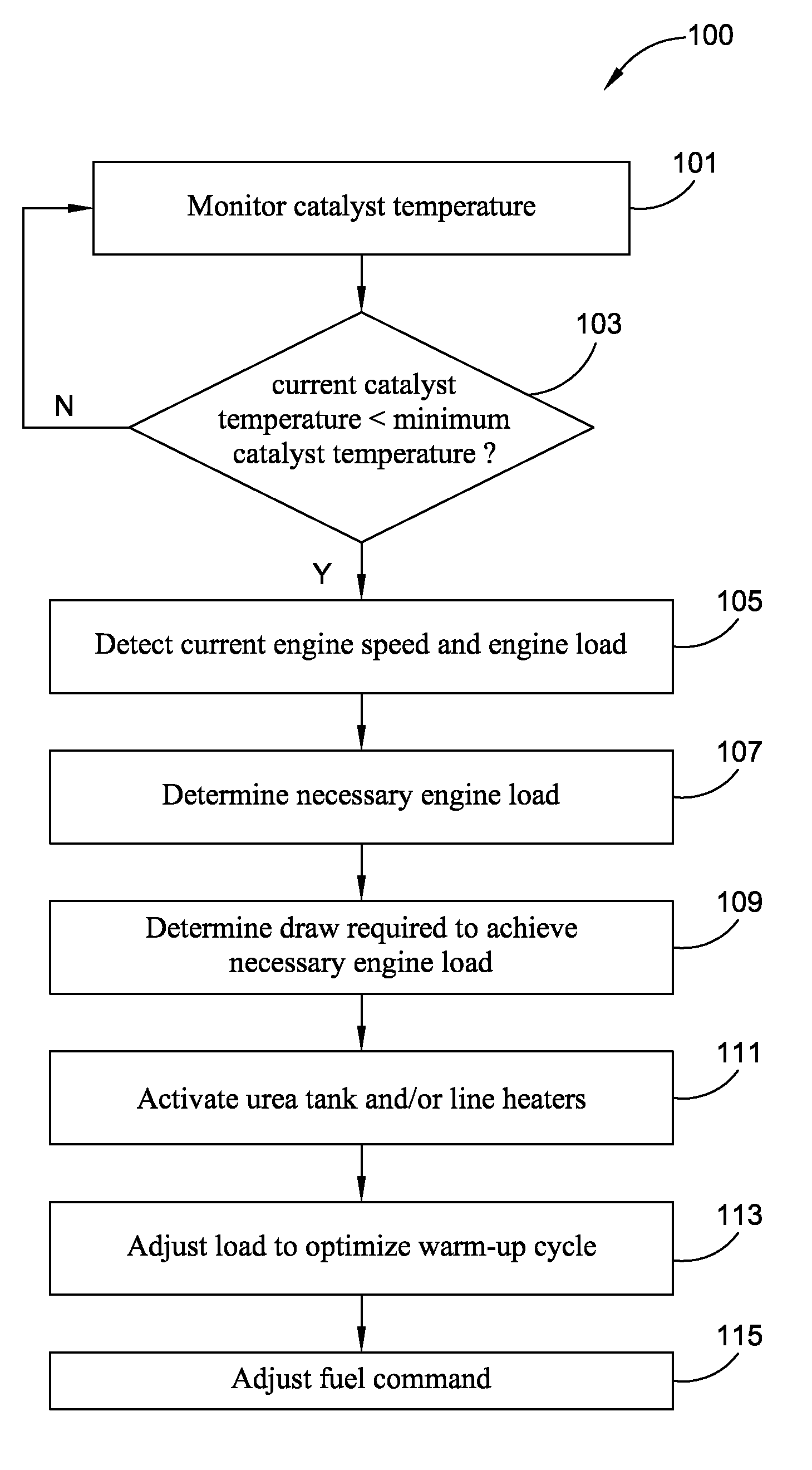Cold-start engine loading for accelerated warming of exhaust aftertreatment system
a technology of exhaust aftertreatment and cold-start engine, which is applied in the direction of exhaust treatment electric control, machines/engines, mechanical equipment, etc., can solve the problems of generating a large amount of overall tailpipe hydrocarbon emissions, affecting the cooling effect of the engine, and affecting the cooling effect of the exhaust system, so as to reduce the catalyst light-off times and reduce the overall tailpipe nitrogen oxide emissions generated during engine cold-start.
- Summary
- Abstract
- Description
- Claims
- Application Information
AI Technical Summary
Benefits of technology
Problems solved by technology
Method used
Image
Examples
Embodiment Construction
[0019]Referring to the drawings, FIG. 1 illustrates a control algorithm for regulating the temperature of an exhaust gas aftertreatment system in a motorized vehicle (not shown). Specifically, an improved method for accelerated warming of motor vehicle exhaust aftertreatment systems is shown in FIG. 1 in accordance with a preferred embodiment of the present invention, designated generally as 100. The method 100 preferably includes at least those steps shown in FIG. 1—i.e., steps 101-115. However, it is within the scope and spirit of the present invention to omit steps, include additional steps, and / or modify the order presented in FIG. 1. It should be further noted that the method 100 represents a single operation. As such, it is contemplated that the method 100 be applied in a systematic and repetitive manner, run in real-time to continuously adjust engine loading and optimize operation of the exhaust aftertreatment system.
[0020]The control algorithm 100 preferably resides in an en...
PUM
 Login to View More
Login to View More Abstract
Description
Claims
Application Information
 Login to View More
Login to View More - R&D
- Intellectual Property
- Life Sciences
- Materials
- Tech Scout
- Unparalleled Data Quality
- Higher Quality Content
- 60% Fewer Hallucinations
Browse by: Latest US Patents, China's latest patents, Technical Efficacy Thesaurus, Application Domain, Technology Topic, Popular Technical Reports.
© 2025 PatSnap. All rights reserved.Legal|Privacy policy|Modern Slavery Act Transparency Statement|Sitemap|About US| Contact US: help@patsnap.com



